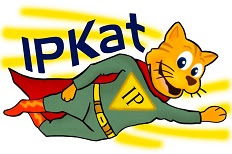Reading an update on linkedin one notices that “The European Observatory on Infringements of Intellectual Property Rights, on behalf of the EU Commission (DG Trade), is launching a second survey of EU entities with an interest in the protection and enforcement of Intellectual Property Rights (IPR) in third countries.”
By collecting info from interested parties a “reality of IPR protection and enforcement in various third countries” can be built. The info will then be used to “provide assistance in preparation for negotiation and discussion with these countries.”
If you have an interest and/or knowledge on a non-EU country jurisdiction (it is you Latin and Caribbean (LAC) countries) do please complete the on-line survey (one per country). The survey started to run last Monday and will be available until the 31 May 2016 (accessible here).
Let’s digest this
In a recent presentation that I did at ELAN, Brussels 8th March, after explaining the topic of technology transfer and IPRS and looking the process in 5 selected Latin American jurisdiction, one question remains: will an invention/creation be protected as a matter of fact?
It is indeed a valid question. Legislation in LAC fulfil international standards: adapting national legislation in accordance with TRIPS (WTO) and many other international agreements administered by WIPO. Moreover, many countries have harmonized the law among their own trade bloc (e.g. CAN Decision 486) and others have stricter rules after signing a bilateral agreement. Yet, this does not give you the whole picture: legislation alone cannot measure the strength of IP protection. For this reason, WIPO recently commissioned distinguished international economists to do a study on the economics of IP. They acknowledged that this was a problematic matter since most of the studies in this area are “based on laws as written rather than enforced.”
Then it is suggested to observe the World Bank data which provides a variety of measures for a country. In the presentation, and using this point, I proceeded to build a chart for the 5 countries that I was studying , namely Brazil, Chile, Colombia, Mexico and Peru. I added to these countries the host country of the date, that is Belgium, so that the audience could compare and contrast the statistics and data. The chart reflected the very poor state of the countries’ regimes (exception been Chile which was very similar to that of Belgium). The indicators that I selected were: Control of Corruption; Government Effectiveness; Regulatory Quality; and Rule of Law. The aggregate indicators were ‘estimates’ giving the selected country's score in units of a standard normal distribution, ranging from -2.5 to 2.5. The latest data came from 2014 and I looked at 3 years (from 2012-2014) to see and establish a pattern.

Hopefully, the numbers do speak for themselves. And because of this, we encourage you to participate in the survey.
Why? The reason for you to participate in the survey
The EU Commission aims to tackle the issues noted in the survey and plans to take action by:
“…
• Ensure that IPR chapters in bilateral trade agreements offer adequate and efficient protection for right-holders and address key weaknesses in partner countries' IPR systems while calibrating commitments to third countries’ level of development;
• Ensure the Commission can make recourse to dispute settlement mechanisms or other remedies where the EU's rights under international agreements are infringed;
• Continue and where possible enhance ‘IP Dialogues’ with key third countries; leverage high-level trade and political dialogues to ensure progress on identified IPR issues;
• Provide and promote awareness of appropriate IP-related technical assistance programmes to third countries, including on the possible use of IP flexibilities; leverage the expertise of relevant international organisations in implementing technical assistance programmes;”
Among others [actions points are found at page 19 on this report here).
Wednesday 16 March 2016
Measuring the Strength of IP Protection: we need your help
Post a Comment












